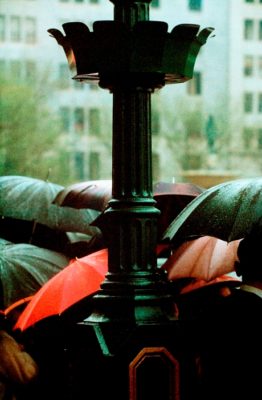Saul Leiter, Early color
Born in Pittsburgh in 1923, to a Polish family with a rabbi father, Saul Leiter was expected to study theology but, at the age of 23, he decided to give up his studies at the theological college in Cleveland and to move to New York to pursue an artistic career.
A self-taught photographer, Leiter undertook his artistic education by spending every summer in the library of the University of Pittsburgh and visiting exhibitions at the Museum of Modern Art in New York. He devoted himself primarily to painting and it is thanks to the abstract expressionist painter Richard Poussette-Dart that he began to take a serious interest in photography. In 1947, he discovered ‘street photography’ by visiting the exhibition of Henri Cartier-Bresson at MoMA and at the same time became the owner of a Leica. He photographed the streets of New York in black and white and in the following year became interested in colour. In 1953, Saul Leiter opened a photographic studio on Bleecker Street and has worked for thirty years for the most prestigious magazines such as Harper's Bazaar, Esquire, Elle and British Vogue.
If he distinguished himself as a fashion photographer, it is his personal work which made him famous. His images of city life made mainly in New York, Paris and Italy between 1948 and 1960, present a unique approach, distinct from his contemporaries. Saul Leiter is one of the pioneers of colour photography. For financial and experimental reasons, he often used poor quality or outdated film, which created an unusual range of colours. His eloquent way of playing with colour, the effects of reflections and transparency, and his very graphic compositions transform reality to create a world that is both poetic, dreamlike and soothing, which is not unlike his own pictorial work.
The exhibition Early Color has been organised with the support of Banque Degroof.


